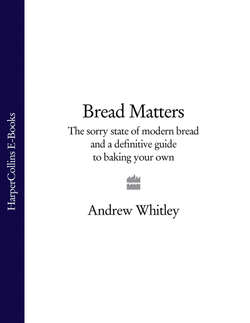Читать книгу Bread Matters: The sorry state of modern bread and a definitive guide to baking your own - Andrew Whitley - Страница 27
Counteracting anti-nutrients
ОглавлениеLactic acid bacteria play a part in neutralising substances in wheat flour that can limit nutrient availability to human consumers. The bran layers on the outside of the wheat grain contain important sources of minerals such as potassium, magnesium, iron and zinc, but the bran also contains considerable amounts of phytic acid, which inhibits the absorption of these valuable minerals and trace elements. Mineral deficiencies are widely reported in developing countries and even in France a survey revealed that 72 per cent of men and 77 per cent of women had magnesium intakes below the dietary guidelines. Wholemeal bread is one of the best sources of magnesium (it has three times as much as white bread) but much of this remains inaccessible unless the phytic acid (phytate) is neutralised. A recent French study demonstrated that the action of lactic acid bacteria in sourdough fermentations improves the nutritional quality of wheat bread by reducing the amount of phytate. Simple fermentation with yeast produced less than half the quantity of soluble (available) magnesium at the end of a four-hour period compared with the sourdough6.
All this raises serious questions about the bioavailability of important nutrients in fast systems such as the Chorleywood Bread Process. The industrial bakers are showing renewed interest in wholegrain cereals for their ‘healthy eating’ ranges. It looks as though their ultra-fast doughs will be unable to deliver all the expected (and aggressively advertised) nutritional goodies.
